SAMURAI SWORD 26 - ISHIDO TERUHIDE
This is a sword manufactured during World War Two by one of the famed master sword makers
of the time. His name was Ishido Teruhide.
Ishido produced swords for high ranking military officers and for civilians during the World War
Two period. His swords are highly sought after. He achieved the rank of Betseki in 1943 by the
Nihon Token Tarenjo and the Nihon Token Shinbunshi.
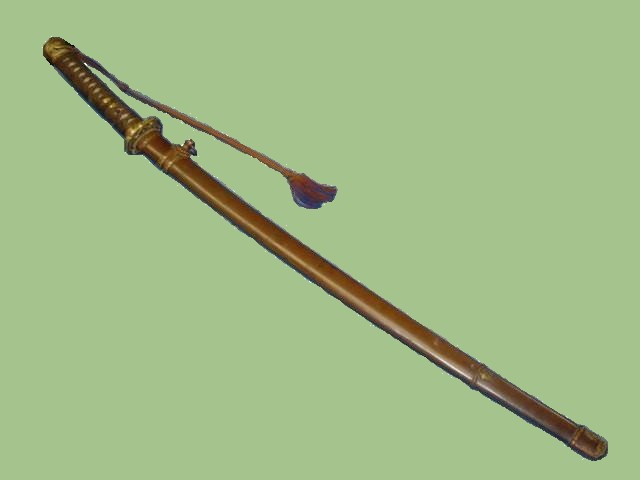
The scabbard consists of a wooden insert with a brownish metal cover. Traditional military mountings
are placed in three different areas. This is a typical configuration found during World War two.
The bottom of the scabbard has a simple metal basic cover.
The bottom picture shows the handle taken apart and all of its components. The handle is held to
the tang via the use of two pegs. The tsuba has flanges on the top and bottom, ensuring that the
fit is tight when put together. Each component is marked with a matching number.

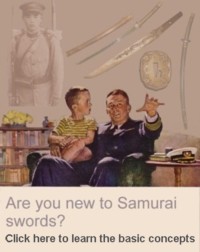
|
The Samurai sword has a very rich history. The sword has been manufactured for several centuries and continues
to be produced today. The sword represented more than just a weapon. It was the soul of the Samurai warrior.
When attempting to identify the type of sword you have It is important to keep in mind that the fittings of
a sword (scabbard, handle, crossguard. etc.) may be identical from one sword to another. The reason why is
because during WWII the same fittings were used in all Army swords, Navy swords, etc. Armed forces are all
about uniformity. They strive to make everything the same.
This is the reason why a sword cannot be identified merely by its external appearance.
Understanding the different components that make up the Samurai sword is the first step in figuring out the
type of sword you have. That is the reason why we have created the
Understanding the Samurai sword section as a means to
provide a novice with the basic knowledge to start the path of determining the questions everyone has;
who made the sword, how old it is nad how much it is worth.
|
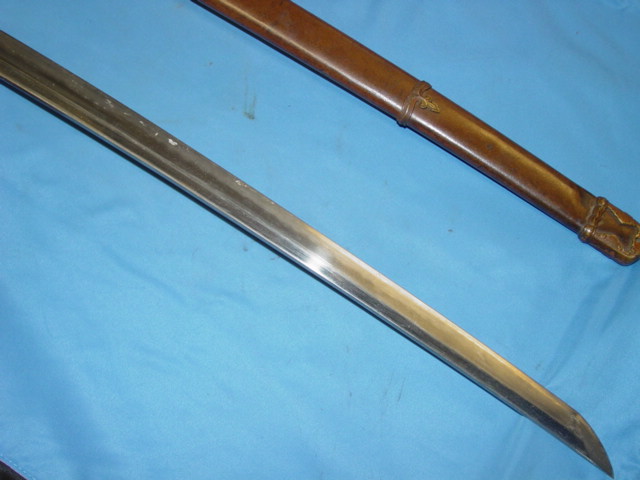
The four cherry blossoms that adorn each corner of the tsuba are also part of a typical mounting
of the japanese armed forces during WWII.
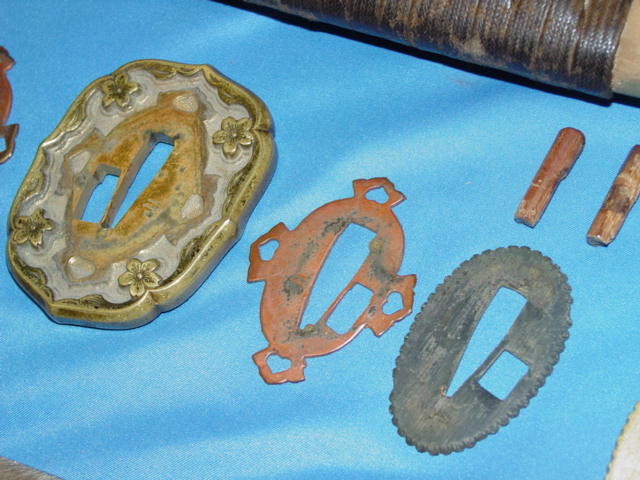
This is a close up vew of three of the flanges employed to tightly secure the handle to the sword.
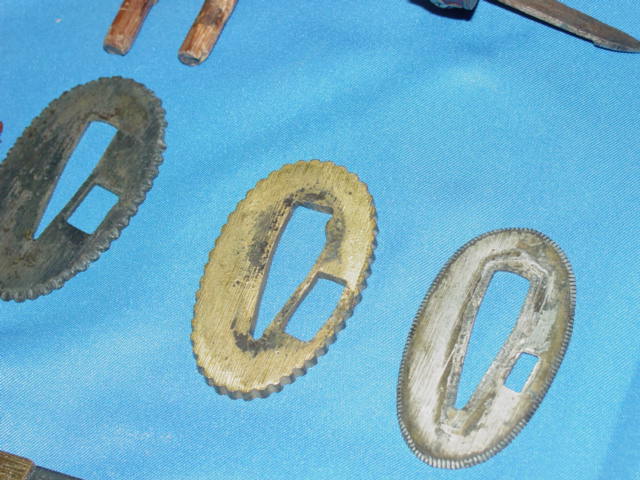
The following pictures show some of the components of a sword. Two wooden pegs go through
the holes in the tang to secure the blade to the handle. Soldiers would often make the peg by
inserting a chop stick in the hole of the tang, then proceeded to break it.
swords often displayed the signature of the maker, their title and school or village on the tang.
The example shown here is nicely signed.
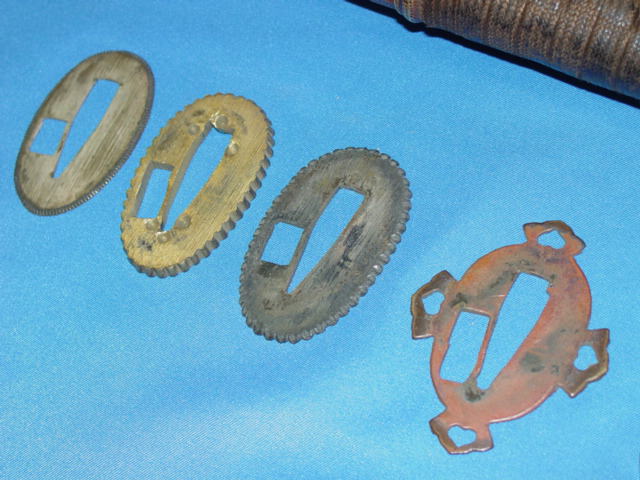
|
This page is a recognition and identification guide for Samurai swords.
Multiple detailed photos of a specific sample are provided. Descriptions point
out clearly defined points that should be noted.
One of the most commonly asked questions is "How much is my Samurai Sword worth?".
A price guide is included here to address this question. The value of the swords is
reviewed over a period of several years. A trend can be observed. The present worth
of the edge weapons in the collector's market is illustrated.
This service is provided free of charge to the visitor/enthusiast courtesy of
MilitaryItems.com,
a company dedicated to the preservation of military history and to providing quality
military antiques and collectibles to museums, institutions and the general public.
|
|
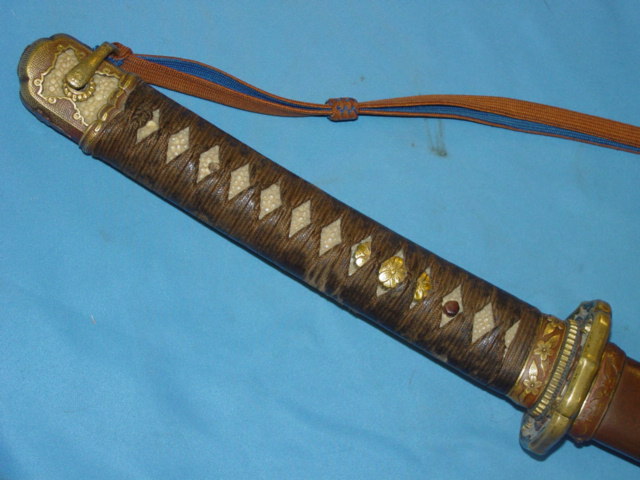
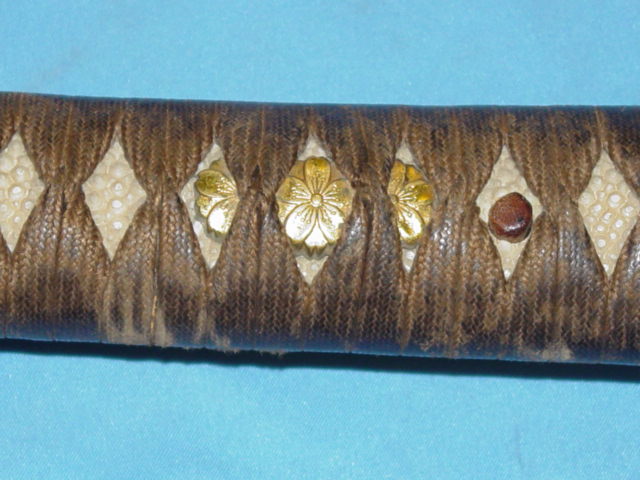
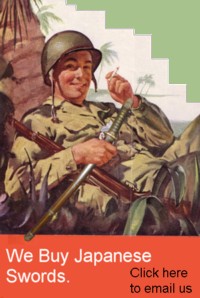
|
WE BUY JAPANESE SWORDS - All types of Japanese edge weapons. Whether it is a WWII era Samurai sword or an
older type of blade.
The process gets started by you sending us an
Email .
We will respond to your inquiry normally within 24 hours and in many cases much faster.
We can tell you what you have, what it is worth and how much we can pay you.
One sword or an entire collection -
Email Us .
|
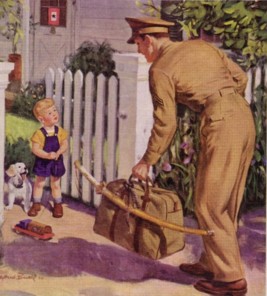 |
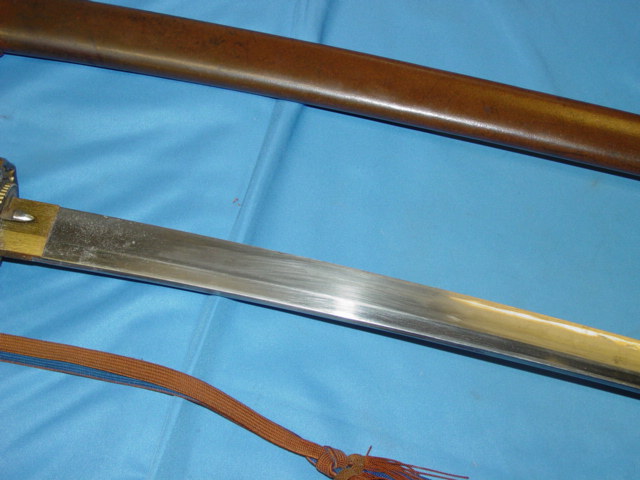
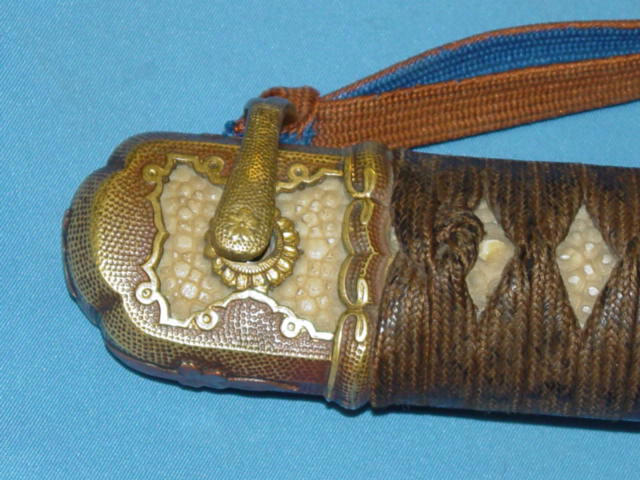
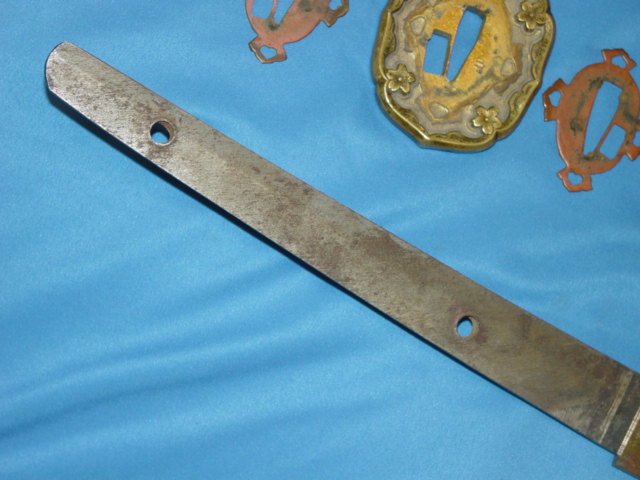
The folowing picture shows the signature found in the tang.
IMPORTANT NOTE
We have received several phone calls
from individuals who believed they have an Ishido Teruhide sword just to find out that the signature
on their sword does not match what we are showing here.
In most cases the signature is what determines the maker of the sword. If you have a sword and the
signature does not match the characters seen here then you do not have a Teruhide sword. The fittings,
handle and scabbard are common characteristics that are found in most WWII swords. Those items do
not determine the maker of the blade.
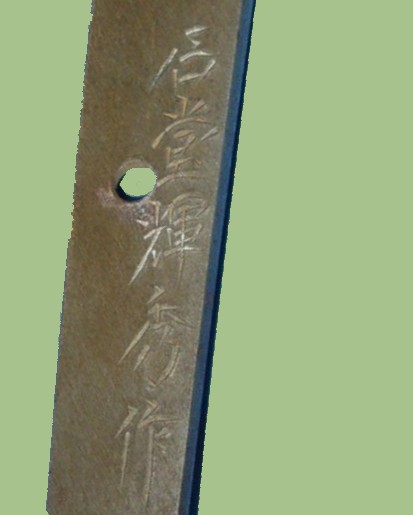
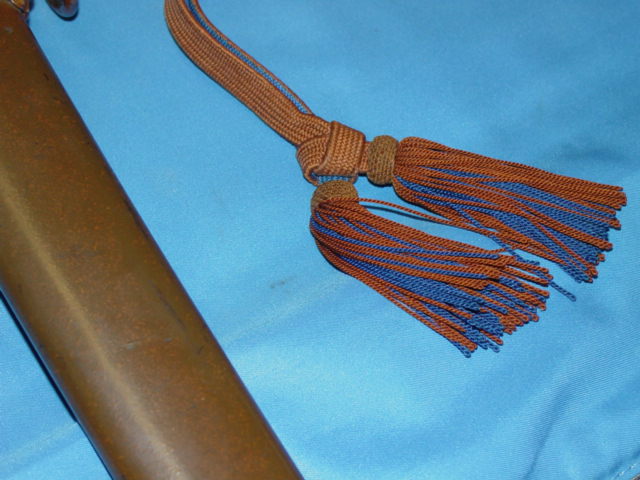
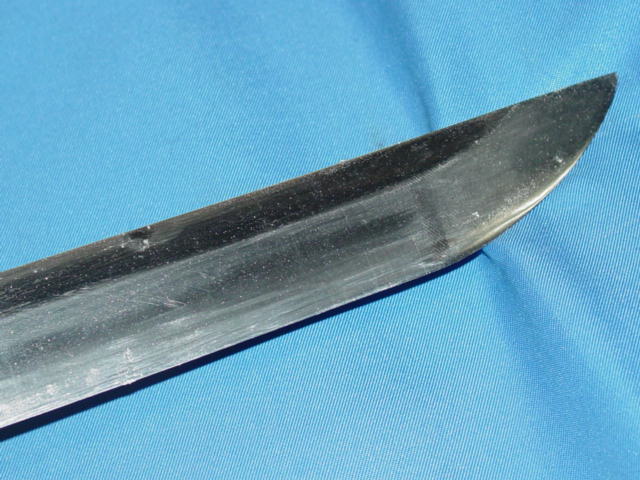
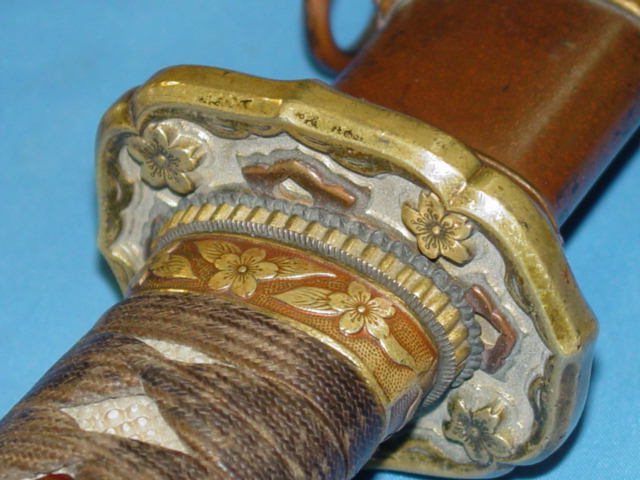
By the Numbers
It is next to impossible to determine the exact number of Samurai swords that were produced and issued to
Japanese soldiers during the war. However, thanks to the record keeping maintained by the US Armed Forces,
it is possible to estimate how many swords were actually shipped home.
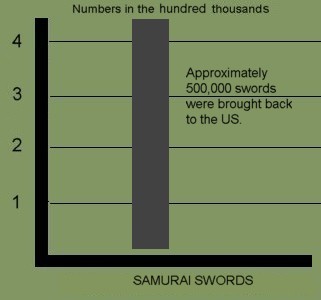 |
There were over 500,000 Samurai swords were brought back home as souvenirs from the war.
There are several caviats to this number.
|
 |
For example, some soldiers took souvenirs and shipped them home circumbenting the established process.
Some of the swords were brought back inside duffle bags without anyone knowing except for the soldier who
captured the sword. This fact would clearly affect the final count.
The number also does not account for swords that were taken by Allied soldiers from other countries.
Collecting Samurai swords
Collecting Samurai swords is a field that has been growing since the days the GI's rummaged around Asia
bringing back military souvenirs. Japanese soldiers carried many of these swords when they went to
battle. Once the soldier was killed or captured, the Americans would take the edge weapons as war trophies.
Eventually all these pieces came back to the United States where military history enthusiasts began to collect them.
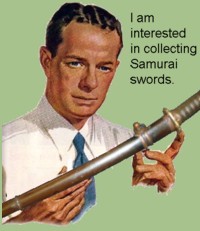 |
In trying to determine if you should collect Samurai swords there are certain factors that should be
considered.
The adjacent table outlines some of the advantages and disadvantages of collecting the Samurai swords.
|
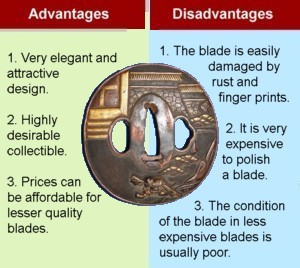 |
This Samurai Sword may be currently reproduced.
It is becoming more difficult to be able to tell the fake ones from the real ones because
the quality of the reproductions is improving. The collector must become familiarized with
the construction style and materials employed in the manufacturing of this item.
Attention to the details is critical in order to be able to determine the authenticity of
the collectible.
If you have an interest is seeing other Japanese Samurai swords, you can do so by going to our
Japanese Samurai Swords Price Guide
identification guide. Where we cover Samurai swords from all periods.
| 




